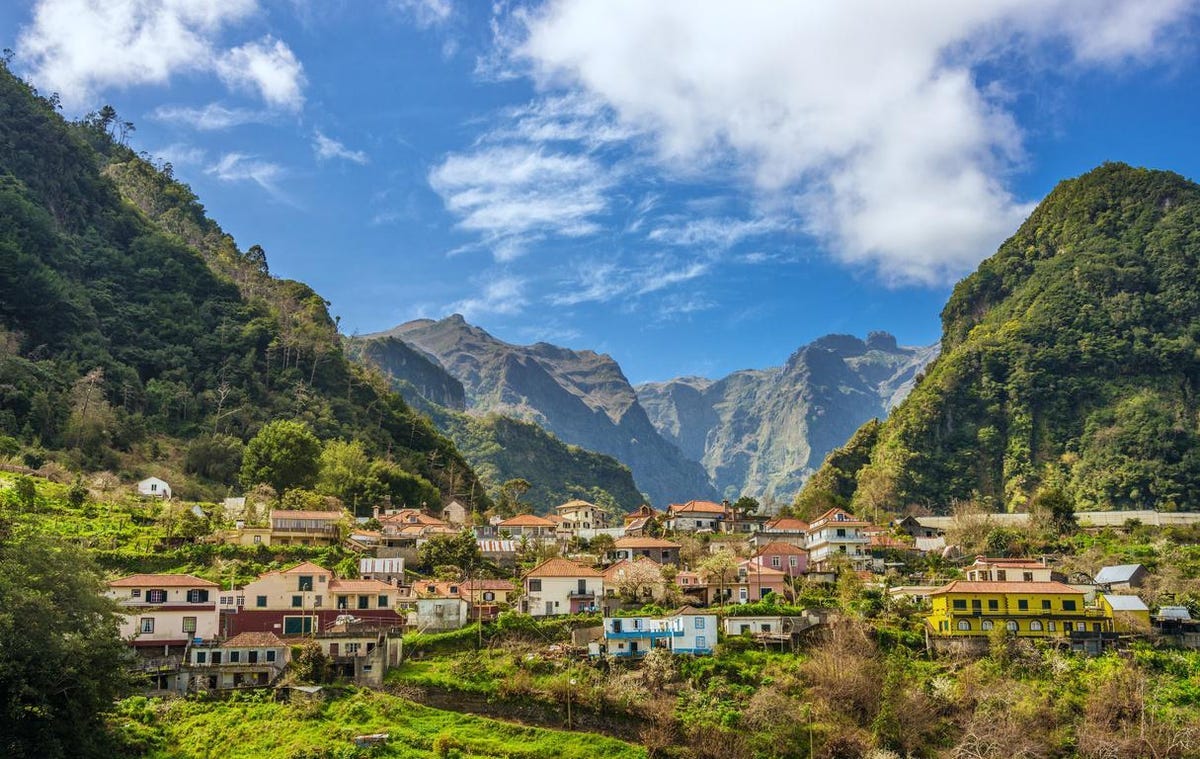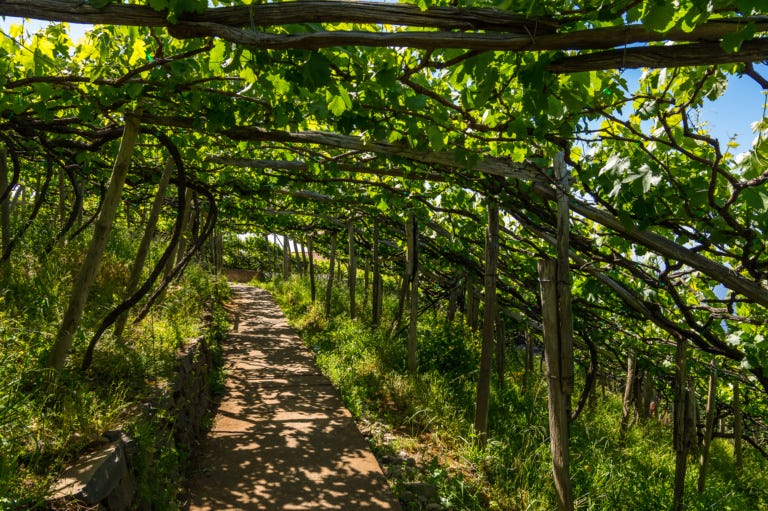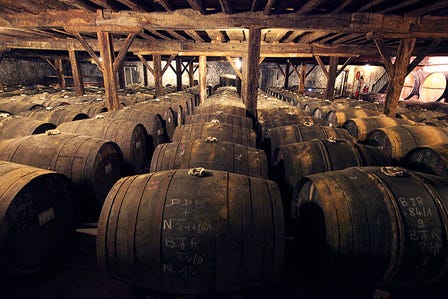Deep Dive: Madeira
Port, but on Island Time. And sometimes Eastern Time.
Some Housekeeping
I’ve turned on paid subscriptions for Mixing Ingredients. The primary reason for this is that Substack has invested a lot into their product recently, and most of that investment is only relevant for newsletters that have subscriptions turned on. So, this change lets me take fuller advantage of the platform. While I don’t have any firm plans about exactly what kind of content will go behind the paywall in the future, I’m working those out, and there will be MI posts and features only available to paying subscribers in the future.
I’ll announce long before that happens, so don’t worry about missing anything yet.
Hopefully by now you’ve made a Cook’s Companion or two and have been curious enough to try a few sips of straight Madeira. Hopefully those sips have made you more curious, but not curious enough to do your own research, and now you’re itching to know more. And now you’re happy, because here’s the deep dive I promised.
The Place
First things first: Madeira is an actual place. That place is an archipelago in the North Atlantic, off the southwestern coast of Portugal. Like another North Atlantic archipelago, the Azores, Madeira is an autonomous region of Portugal. I won’t try to dive into the politics here, but it was “discovered” completely uninhabited by the Portuguese in 1419 and settled promptly. That actually kicked off the Age of Discovery, so I guess we have Madeira to thank/blame for…a whole lot of stuff.
Madeira is basically one big resort. And it’s easy to see why - look at this place.
I’ve been to mainland Portugal, and I can’t recommend it enough. One of the most beautiful places I’ve been. And it looks like Madeira may top it. It’s almost always in the 60s, it doesn’t rain much, and it’s usually sunny. It’s also situated in its own free trade zone, so they’re still set up well to be a continental gateway.
Technically, their most valuable export is Cristiano Ronaldo. But after CR7 comes an export the Saudis won’t be buying any time soon: wine1.
The Grapes
As soon as they Portuguese settled the islands, they started growing vines. The grapes were the same as the mainland, and over the years the locals made adjustments based on what was working and what wasn’t. For ~300 years or so, wine from Madeira was a lot like wine from the mainland; still, dry, and red or white.
The grapes then are probably the same as the grapes now, though the mix has certainly changed. Most of them are Tinta Negra, a super high-yield red grape with high sugar content grown on pergolas. You wouldn’t make a still red out of this grape today, but tastes have changed since the 15th century.
There are also several white grapes that make up the modern Madeira: Sercial, Boal, Verdelho, and Malvasia. The first two you’re very unlikely to ever see on their own, but the latter two you might see. Verdelho is grown across the Iberian peninsula, and Malvasia is grown just about everywhere. It’s done quite well in Arizona2, and there are some good wines from that grape that you can find.
The Wine
The basic wines that Madeira was producing from these grapes in the 15th, 16th, 17th, and 18th centuries were probably all fine for the day. But the primary consumers were trading vessels stopping by a bustling port and moving onward. The wine wouldn’t keep for that whole voyage, and crews would complain about the spoiled wine.
Hearing these complaints, Madeira looked to the mainland. For some reason no one has yet discerned, an abbot in the Douro valley was adding distilled spirits to sweet wine and teaching some enterprising gents from Liverpool the trade. The fortification from the spirit helped it survive the trip up to England, since they couldn’t buy French wine (war), and Portugal is a much longer trip by boat.
The vintners on Madeira saw that successful shipping arrangement and set about replicating it in their own way. They started with distilled spirit from cane sugar (which would be a rum, though it’s now always technically from fruit so that they can call it brandy). They mixed in that spirit with the wine in big barrels, loaded them up, and hoped for the best.
They didn’t account for how hot the holds of the ships would get over so long a voyage, and the vintners were shocked at the taste of a barrel that made its way back to them. The oxidization from the heat lent a unique, almost burnt flavor to the wine that it turned out people actually preferred. So, the merchants did the only thing they could think of and started loading barrels onto every ship, have them wait in the hold until they returned to the island, and then could be sold with the preferred taste. Turns out, we’ve always wanted alcohol that’s been out to sea…
But paying for that cargo space is crazy expensive. So, they sought out ways to get the same effect without circumnavigating the known world and settled on the highly sophisticated methods of “leaving it out in the sun” and “storing it in rooms that you know get real hot.” And that’s pretty much still what they do today, though there’s a bit more sophistication to it to reduce variability from batch to batch and to speed up the heating process (since we have heaters now…). The more traditional the method, the higher quality the wine and the more you’ll pay.
What to Look for in a Bottle
Madeira, like pretty much every other fortified wine I’ve encountered, especially Port, varies wildly. And there’s just not that much of it in most stores. So, you may not end up having much choice. The biggest thing to avoid is this: don’t drink it or use it in cocktails if it’s marked as “for cooking.” Those often have salt and pepper added3, and that’s not what you want to drink.
Assuming you’ve avoided a cooking wine, you’ll likely find one labeled as Rainwater. That’s what I used in the Cook’s Companion. It’s a marketing name that the brands are trying to use in America, and they’re not very forthright about how they’re actually making it. Consider it the bottom rung of the Madeira quality ladder, though I do quite like it.
If you’re lucky enough to have a selection available past Rainwater, it may be “Finest.” And if there’s still more, you’re into the levels of “Reserves.” Those break down this way: Extra > Special > “Reserve.” So Extra Reserve is the top rung, and it’s probably going to run you a pretty penny.
If you see a year on the bottle, it’s vintage and you’re probably at an auction. If it’s just on the shelf, buy it. Since it’s already oxidized, once it’s bottled it will hold forever. That makes it unique among fortified/aromatized wines and makes it a bit easier to splurge if you have the opportunity.
The American Connection
Americans of the 1700s LOVED Madeira. They were mad for it; they probably drank over 90% of what the island produced. None of the colonies grew (good) grapes, and this stuff was coming over on pretty much every ship that made landfall4. Delegates used it to toast the signing of the Declaration of Independence. Madeira was favored by absolutely every founding father you can name. It’s called out in Mount Vernon to this day…
Americans kept loving the stuff all the way until Prohibition almost ruined it, just like it almost ruined many things. With the main market cut off, the island stopped producing most wine. That was exacerbated when, coming out of Prohibition, ships could make the journey across the Atlantic without stopping - the island was cut out of the trade route by technological advancement. It’s only been since the 1980s that there’s been a revival in the industry and another marketing push back in the States, and that seems to be working well enough.
Summary
Madeira is an accident of reality, and I love that. Really, all alcohol traces its roots back to an accident where someone realized that fruit that should taste real bad was actually very fun. Most bottles don’t continue that legacy quite so directly as Madeira, though.
It’s also unique in that its a bottle that doesn’t so much reflect the place it’s from and instead reflects what that place did. I haven’t been, but I expect most Madeira tastes more like a shipping vessel than it does verdant mountains. I don’t generally equate amazing scenery and vast landscapes with oxidization. It’s a unique ingredient with a unique history, and I’ve enjoyed finding ways to use it in cocktails.
Next week, I’ll be back to share a simple recipe inversion that I think works great with Madeira and really shows it off.
I didn’t actually research if the PIF invests in wine/alcohol. It wouldn’t surprise me. ..
Yes, there’s some legitimately good wine grown in AZ. Come visit and see for yourself.
This, apparently, is the only way the French consume Madeira. Go figure.
And some that didn’t. The Boston Tea Party was apparently almost the Boston Madeira Bash due to some tax issues on a shipment being brought in by one John Hancock.




